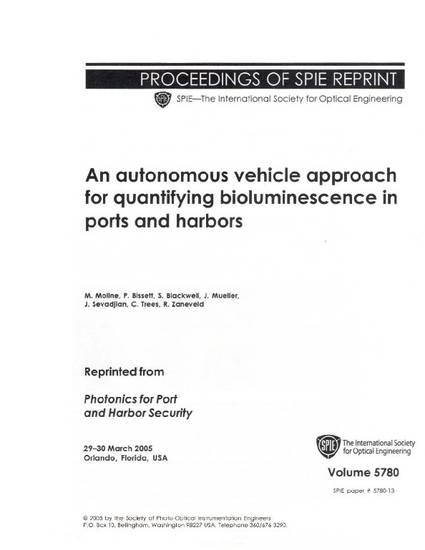
Bioluminescence emitted from marine organisms upon mechanical stimulation is an obvious military interest, as it provides a low-tech method of identifying surface and subsurface vehicles and swimmer tracks. Clearly, the development of a passive method of identifying hostile ships, submarines, and swimmers, as well as the development of strategies to reduce the risk of detection by hostile forces is relevant to Naval operations and homeland security. The measurement of bioluminescence in coastal waters has only recently received attention as the platforms and sensors were not scaled for the inherent small-scale nature of nearshore environments. In addition to marine forcing, many ports and harbors are influenced by freshwater inputs, differential density layering and higher turbidity. The spatial and temporal fluctuations of these optical water types overlaid on changes in the bioluminescence potential make these areas uniquely complex. The development of an autonomous underwater vehicle with a bioluminescence capability allows measurements on sub-centimeter horizontal and vertical scales in shallow waters and provides the means to map the potential for detection of moving surface or subsurface objects. A deployment in San Diego Bay shows the influence of tides on the distribution of optical water types and the distribution of bioluminescent organisms. Here, these data are combined to comment on the potential for threat reduction in ports and harbors.
Available at: http://works.bepress.com/james_mueller/10/
